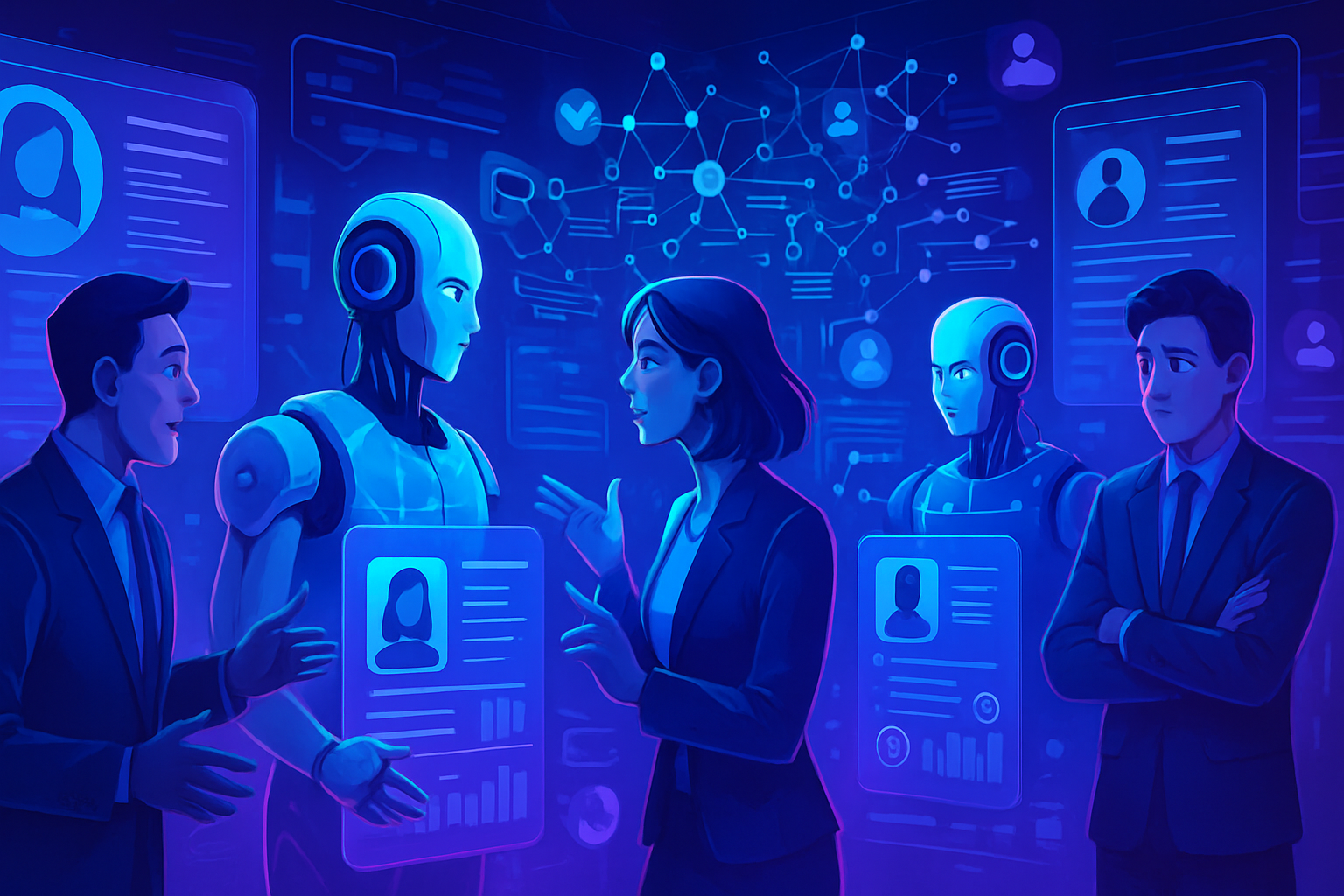Artificial intelligence and decarbonization are in opposition in a duel against climate urgency. The rapid rise of AI Entrepreneurship amplifies energy demand, thus threatening carbon neutrality goals. AI will consume up to 50% more energy, generating greenhouse gas emissions at a critical moment for the planet. Current technological choices exacerbate the tensions between innovation and environmental responsibility. In this perspective, an essential question emerges: is the sustainability of AI a chimera?
The energy impact of artificial intelligence
The question of compatibility between artificial intelligence (AI) and decarbonization arises with unprecedented acuity. The explosive energy consumption of AI technologies deserves sustained attention. According to a report by the Shift Project, the electricity consumption of data centers could triple by 2030, an alarming trend that threatens global climate goals.
Currently, AI accounts for about 15% of this consumption, but projections indicate that it could reach between one third and half, thus exacerbating resource extraction. This situation raises crucial questions about the sustainability of technological expansion. With a frenzy of investments directed toward creating new infrastructures, the pressure on the electric grid is increasing.
Contradiction within energy policies
Current energy strategies often rely on the paradox of wanting to reduce greenhouse gas emissions while encouraging the increasing use of energy-intensive technologies like AI. In the United States, for example, the majority of electricity still comes from fossil fuels, making the situation critical for the desired decarbonization.
The choice of renewable electricity thus becomes a significant issue. Even in France, which has a largely nuclear decarbonized production, the explosive energy demand caused by AI could harm other essential sectors. The competition for access to green electricity could lead to rising prices, thereby compromising decarbonization efforts.
The stakes of tech-solutionism
The concept of tech-solutionism carries the illusion that AI could provide sufficient energy gains to solve the environmental crisis. However, this vision appears to be a chimera. The increase in users and demand could far exceed advances in energy efficiency.
Reports produced by the Shift Project pose a fundamental debate about the role of AI in the decarbonization strategy. Establishing consumption caps for electricity is proposed, raising questions about the necessary regulation. This type of regulation, while ecologically desirable, faces economic motivations and the quest for investments in a vital technology.
Uncertain future and global disagreements
Disputes over energy sobriety are even more complex on the international stage. Leaders such as Donald Trump and Xi Jinping often show indifference to calls for regulation. This political resistance could have repercussions on collective efforts to contain the harmful effects of AI on the environment.
The current situation calls for awareness and rapid action. If AI is not properly regulated, it risks leading to conflicts over energy use, thereby compromising other sectors necessary for reducing CO2 emissions. The future of coexistence between cutting-edge technology and environmental respect remains uncertain, demanding innovative solutions and adaptation of economic models.
For more in-depth perspectives, the article on the ecological dilemma related to AI provides essential reflections. Initiatives like the integration of heat pumps in every new building are also among the potential solutions to consider in this context.
Frequently asked questions about AI and decarbonization
What is the impact of AI on global energy consumption?
AI leads to a significant increase in energy consumption, particularly through data centers. According to some estimates, this consumption could triple by 2030, with AI representing a significant share of this increase.
How can AI contribute to decarbonization?
While AI can optimize certain processes to improve energy efficiency, its potential is limited by the amount of energy it requires, which raises questions about the balance between its benefits and its carbon footprint.
What are the main energy sources used to power AI infrastructures?
In many countries, especially in the United States, AI infrastructures are primarily powered by fossil fuels, which contributes to greenhouse gas emissions.
Are there solutions to reduce the carbon footprint of data centers dedicated to AI?
Proposals include establishing electricity consumption caps and analyzing AI use on a case-by-case basis, prioritizing applications deemed essential for sustainability.
What conflicts may arise between AI and other sectors regarding energy consumption?
If data centers continue to grow rapidly and consume the majority of decarbonized electricity, other sectors, which also need to electrify to reduce their emissions, could be disadvantaged, leading to conflicts over usage.
Is “tech-solutionism” a viable approach to addressing decarbonization challenges with AI?
Tech-solutionism can be misleading, as it suggests that the energy gains achieved through AI will offset its exponential use, which is unlikely according to sustainability experts.
How can companies balance AI innovation and ecological responsibility?
Companies need to assess the environmental impact of their AI projects and prioritize the research and development of applications that positively contribute to sustainability while minimizing their fossil fuel consumption.
What are the long-term implications of increased AI use on the energy transition?
In the long term, if AI continues to develop without sustainable solutions, there is a risk that decarbonization goals will be compromised, as the increase in consumption could negate progress made in other sectors.






